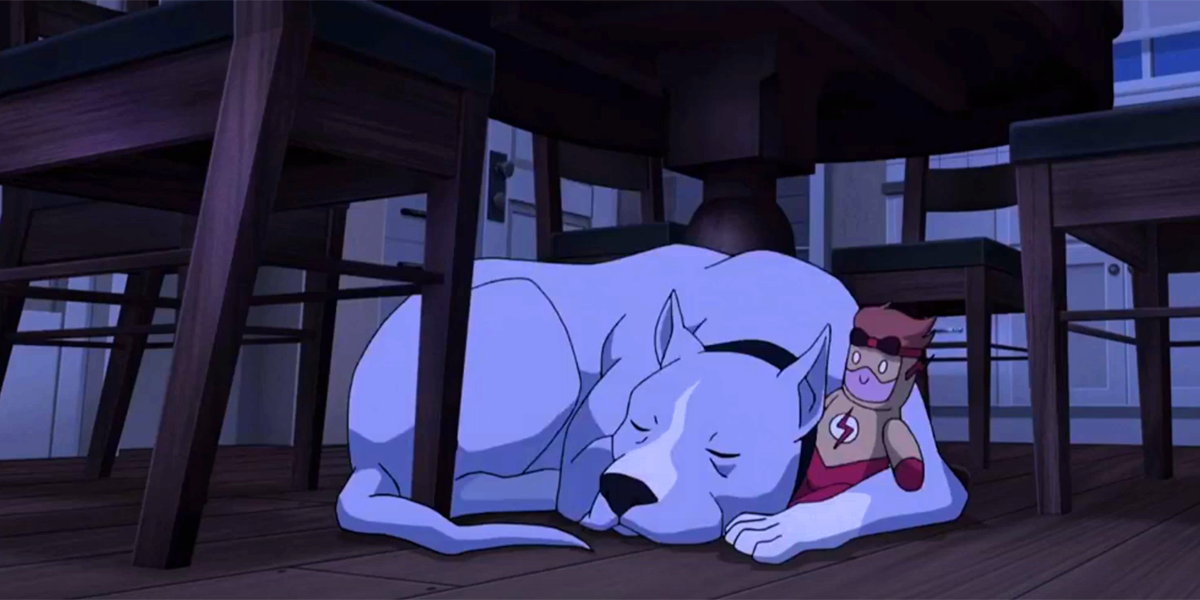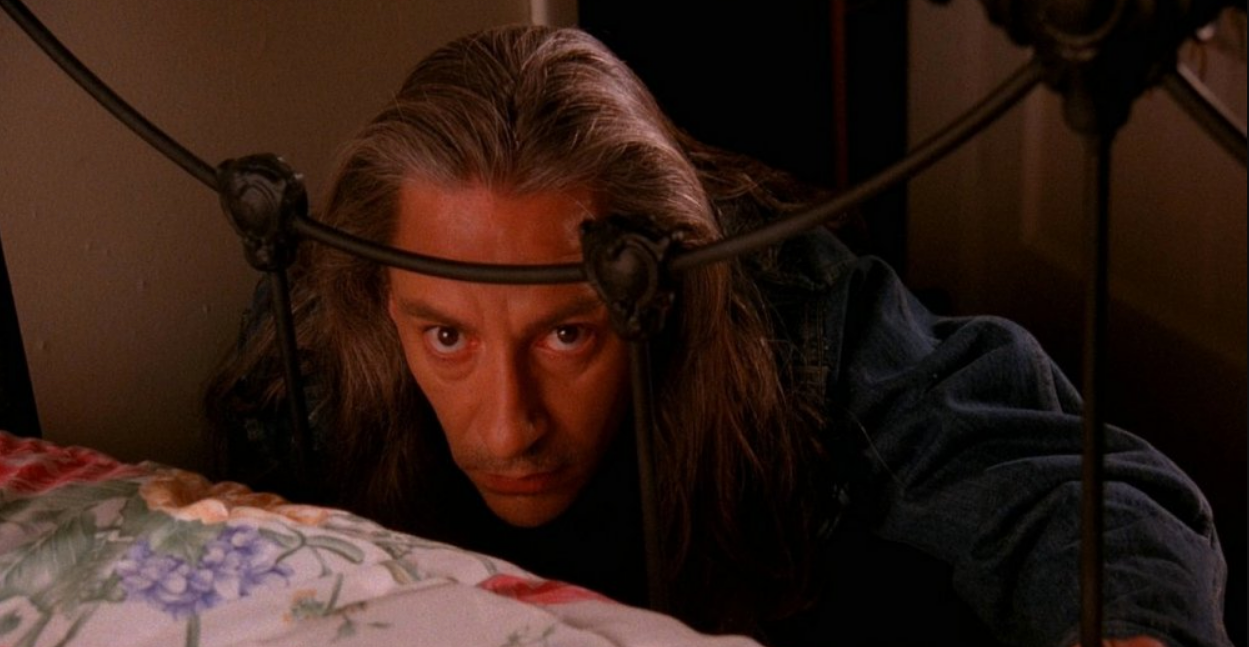Fans at Comic-Con International in San Diego were thrilled by the announcement that Young Justice would return on DC Universe. The acclaimed animated show has been recently enjoying a surprise third season (officially known as Young Justice: Outsiders) after a three-year hiatus, and it was a relief to hear that a fourth season would follow so close on its heels. The show, which has expanded to contain a Justice League Unlimited-sized cast of teen heroes, is a straightforward but heartfelt action saga that fills the shoes of animated superhero fare like the 1990s X-Men cartoon. But there is one element to Outsiders that doesn't quite fit: its uncanny end-title tableaus, which seemed to be conjured (intentionally or otherwise) from the brilliant but unsettling ouvre of cult TV and movie director David Lynch, best known for his surreal soap opera series, Twin Peaks.
Early seasons of Young Justice used a utilitarian, text-over-color end-title, with a pulsing superhero theme that was of a piece with the high-octane content it followed. Now, that theme is replaced by a echoing piano piece, one that seems to be derived from Erik Satie's "Gymnopedie No. 1," and more pertinently, Angelo Badalamenti's "Twin Peaks Theme," which combined keyboard and guitar. Both source pieces are full of empty space, and feel contemplative and solitary.
"Gymnopedie No. 1" has been used to score high-brow fare such as My Dinner With Andre and Woody Allen's Another Woman, and "Twin Peaks Theme" similarly prepares the audience for a thoughtful experience.
In an Instagram post, producer Phil Bourassa writes that the purpose of the end sequence was to give more "room to breathe." Though Bourassa's description somewhat explains the purpose of such a severe change in tone, it does not suggest the extent to which Outsiders' end theme music (credited to series composers Kristopher Carter, Michael McCuistion, and Lolita Pitmans) is so intensely spacey, and why they chose a piece that fails to resolve, leaving an air of uncertainty over the episode.
The images chosen reinforce the contemplative tone. The first episode of Outsiders shows a seemingly innocuous scene: Wally West's dog, Brucely, sleeps quietly under a kitchen table, cuddling a Kid Flash doll. The aforementioned Twin Peaks theme plays, as does the sound of the dog's breathing. We wait for something to happen -- a final gag, a stray easter egg -- but nothing does.
The waiting puts us on edge. The seeming normalcy of the scene, married to the spare music, will put a Lynch fan in mind of some of the director's scariest scenes: the introduction of stringy-haired "Bob," one of Twin Peaks most terrifying and mysterious villains, crouching behind a bed in the empty suburban bedroom of a murdered teenage girl; or Mullholland Drive's opening scene, which wrings unspeakable terror out of a Denny's.
Episode 3 gives us another everyday scene -- a red SUV (actually the team's "Bio-Ship" in car form) parked in front of a yellow-panelled suburban garage. A blue full moon shines down, and crickets chirp. We're maybe 20-feet away from the car, just observing... what? The minute-long sequence gives us enough time to wonder -- and fans have done just that, with some message boards speculating that the scenes contain a dark secret, or even an unseen presence such as an evil speedster. (Shades of Denny's.)
Subsequent Outsiders episodes follow this template, with increasingly unsettling results. A vehicle or "pet" (such as Sphere, Brucely, Wolf, or the Bio-Ship,) rests, in a banal location. The strange theme plays, and there is a sound effect, such as breathing or insects. Sometimes the vehicles take their futuristic forms; the fairy-tale fierceness of the snow-white Wolf adds a fantastical element.
All these settings seem to hint at something sinister lurking beneath normal Americana, conjuring the terrible secrets exchanged in the just-folks diners of Twin Peaks, or the white-rose bedecked picket fences of Blue Velvet, which shroud shocking violence.
Speaking of Blue Velvet -- there is one vignette that recurs, and it is one of the most overtly Lynchian of all: a close-up of Lobo's severed finger, lying forgotten on the ground. This seems to be a direct nod to the severed ear ("that's a human ear, all right"), which puts the gears of that movie's plot in motion. Lobo's digit recurs several episodes later -- a disturbing intrusion, forgotten by viewer and characters alike.
It seems to have decomposed, again unsettling us and suggesting disturbing questions, which may or may not ever be answered (this idea of questions begetting questions will be familiar to anyone who endured Lynch's gorgeously opaque Twin Peaks: The Return.) The mutated finger is a deformed artifact that we can't shake, like the hideous, needy baby of Eraserhead, who inhabits the main character's life and nightmares.
We don't know whether Season 4 of Outsiders will continue this tradition, or to what extent the creators have deliberately created a Lynch-like dreamscape. It's an odd move, and one that sends us out on a disturbing note back to our regular lives, where a veneer of normalcy veils a dark American weirdness.
New episodes of Young Justice: Outsiders premiere Tuesdays throughout the summer on DC Universe.



